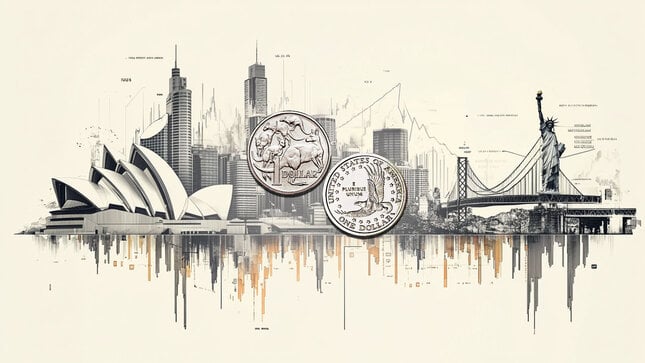- Durable Goods expected to rise 0.8% in April.
- Retail Sales were weak in April after a strong first quarter.
- Nonfarm Payrolls' dismal April result was just 25% of prediction.
- Markets may find some dollar and yield solace in Goods Orders.
Americans reconsidered their retail expenditures in April after a bang-up first quarter and that hesitation may carry over into the smaller category of Durable Goods purchases.
Sales of these goods are expected to climb 0.8% in April after March was revised to 1% from 0.5%. Goods outside of the transport sector are forecast to add 0.7% following March’s adjustment to 2.3% from 1.6%. Nondefense Capital Goods, the business investment proxy, is projected to add 1.5% after March was raised to 1% from 0.9%. Orders ex-Defense increased 1.8% in March, revised from 0.5%.
Durable Goods
Retail Sales
Retail consumption was very strong in the first quarter rising 5.13% a month as consumers were aided by Washington’s stimulus checks in January and March. The Control Group Category, which mimics the consumer spending component of gross domestic product (GDP) averaged a 3.96% monthly gain for the period.
Retail Sales
FXStreet
Except for the May, June and July rebound from the lockdown collapse, these were the highest quarterly numbers in a generation.
Durable Goods
Durable Goods are a subset of Retail Sales, designated by the US Census Bureau as items designed to last three or more years in normal use. Hair dryers, cars, commercial aircraft and electrical turbines all qualify, though the purchasing and financing considerations are vastly different.
The Nondefense Capital Goods Category gathers business investment spending and is closely watched for its contribution to GDP and for managerial optimism and intent.
The ex-Transport category, also called core durable goods orders, excludes purchases of transportation equipment because of the high value of aircraft, trains and other motive goods.
In practice, the orders of a single firm, Boeing Company of Chicago, can skew the overall Durable Goods category because orders for multiple aircraft are booked in a single month.
Purchases of Durable Goods were more restrained in the first quarter averaging 1.03% a month. Business spending in the Nondefense Capital Goods category was quiet, gaining just 0.23% each month, but that came after a strong second half of 2020 that averaged 1.83%.
Nonfarm Payrolls
After an excellent first quarter when payrolls rose 513,000 a month, expectations were high on May 7 that April’s Nonfarm Payrolls would top one million. In fact payroll additions numbered just 266,000 and the March total was revised to 770,000 from 916,000.
Most analysis laid the blame on the increased and extended federal unemployment benefits that, for lower paid workers, were the equivalent of their wages without the annoyance of toil.
Conclusion
Durable Goods Orders offer insight into the long-term outlook of consumers and businesses. Because they are bought less frequently, are usually more expensive, and normally have a wider time-frame for replacement, they are a good indication of economic prospects out several years.
An individual might want a new car or a company a delivery truck, but the decisions will depend on employment and sales. When there is a positive view of the economy people invest.
Even though payrolls were disappointing in April, it wasn’t for a lack of offered positions. The Job Openings and Turnovers Survey (JOLTS) listed 8.1 million unfilled jobs in March the most on record. That number can only have gone up in April.
The economy expanded at a 6.4% annualized pace in the first quarter. The rate in the second is estimated to be 10.1% by the Atlanta Fed.
For consumers and businesses the expectations for employment and sales should be very high and that may encourage Durable Goods purchases despite April’s weak Retail Sales.
Currency markets have sold the dollar on poor US consumer numbers. Durable Goods could give that narrative pause.
Information on these pages contains forward-looking statements that involve risks and uncertainties. Markets and instruments profiled on this page are for informational purposes only and should not in any way come across as a recommendation to buy or sell in these assets. You should do your own thorough research before making any investment decisions. FXStreet does not in any way guarantee that this information is free from mistakes, errors, or material misstatements. It also does not guarantee that this information is of a timely nature. Investing in Open Markets involves a great deal of risk, including the loss of all or a portion of your investment, as well as emotional distress. All risks, losses and costs associated with investing, including total loss of principal, are your responsibility. The views and opinions expressed in this article are those of the authors and do not necessarily reflect the official policy or position of FXStreet nor its advertisers. The author will not be held responsible for information that is found at the end of links posted on this page.
If not otherwise explicitly mentioned in the body of the article, at the time of writing, the author has no position in any stock mentioned in this article and no business relationship with any company mentioned. The author has not received compensation for writing this article, other than from FXStreet.
FXStreet and the author do not provide personalized recommendations. The author makes no representations as to the accuracy, completeness, or suitability of this information. FXStreet and the author will not be liable for any errors, omissions or any losses, injuries or damages arising from this information and its display or use. Errors and omissions excepted.
The author and FXStreet are not registered investment advisors and nothing in this article is intended to be investment advice.
Recommended Content
Editors’ Picks

AUD/USD drops to 0.6350 as markets turn cautious on trade uncertainty
AUD/USD is falling back toward 0.6350 in Thursday's Asian trading amid fading optimism over a quick resolution to the US-China trade dispute. Meanwhile, a renewed US Dollar selling on looming trade uncertainty, concerning US, China and Japan could limit the pair's downside.

USD/JPY tumbles toward 142.50 amid US-Japan trade talks
USD/JPY closes in on 142.50, correcting sharply from over a one-week top set on Wednesday. Uncertainty over the US-Japan trade talks and the divergent BoJ-Fed policy expectations continue to offer a double-whammy to the pair amid a fresh bout of US Dollar selling.

Gold price bounces back above $3,350 on fading US-China trade deal optimism
Gold price regains positive traction abpve $3,350 in the Asian session on Thursday, snapping a two-day losing streak to the $3,260 area, or the weekly low touched the previous day. The optimism over a possible US-China trade deal fades quickly and revives demand for the safe-haven bullion.

Ethereum ETF sees boost as bulls target descending channel resistance
Ethereum gained 2% on Wednesday after US spot Ether ETFs recorded their largest inflows since February 4. However, the top altcoin could face a correction after experiencing a rejection at its 50-day Simple Moving Average.

Five fundamentals for the week: Traders confront the trade war, important surveys, key Fed speech Premium
Will the US strike a trade deal with Japan? That would be positive progress. However, recent developments are not that positive, and there's only one certainty: headlines will dominate markets. Fresh US economic data is also of interest.

The Best brokers to trade EUR/USD
SPONSORED Discover the top brokers for trading EUR/USD in 2025. Our list features brokers with competitive spreads, fast execution, and powerful platforms. Whether you're a beginner or an expert, find the right partner to navigate the dynamic Forex market.


